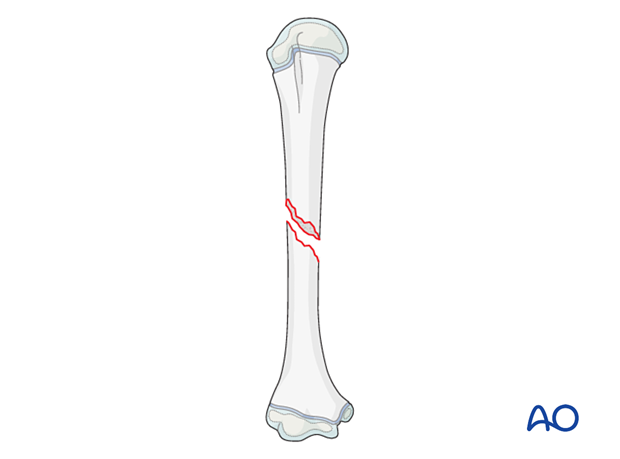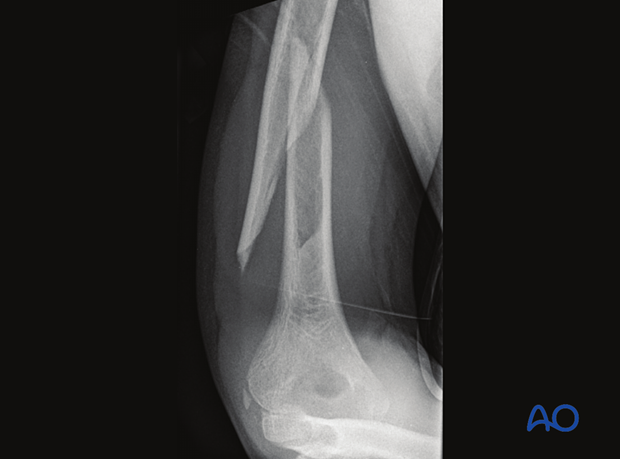12-D/5.1 Simple complete oblique or spiral fracture
Definition
Simple oblique (>30°) or spiral fractures of the humeral shaft are classified 12-D/5.1.
Humeral shaft fractures represent 2–5% of childhood fractures.
These fractures are more frequently seen in children 12 years of age and above as a result of falls and sport/recreation injuries, and in children below 3 years of age where the suspicion of a nonaccidental injury should be explored.
Radial nerve function should be assessed as primary lesion may be present.

Remodeling
The closer the fracture is to the proximal physis the better the remodeling potential.
Translation remodels completely and is independent of location.
Remodeling of varus deformity is more predictable and whilst there is no functional limitation, persistent angulation of >20° can lead to visible deformity.
Radiological evaluation of rotational malalignment is difficult.
X-ray
Most fractures can be identified on plain x-rays.
AP and lateral views including the elbow and shoulder are usually sufficient for diagnosis.
Transthoracic x-rays should be avoided where possible.
A single view including the adjacent joints may be sufficient for surgical decision making.














